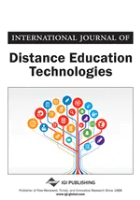
International Journal of Distance Education Technologies
Scope & Guideline
Advancing Knowledge in Technology-Enhanced Education
Introduction
Aims and Scopes
- Distance Learning Technologies:
The journal emphasizes the development and evaluation of technologies that facilitate distance education, including online learning platforms and tools that support interactive and engaging learning environments. - Pedagogical Innovations:
There is a strong focus on innovative teaching methodologies that leverage technology to improve learning outcomes, including blended learning, immersive learning, and the use of virtual reality in educational settings. - Teacher-Student Interaction:
Research on how technology influences teacher-student interactions is a core area, with studies exploring the dynamics of online engagement and effectiveness in various educational contexts. - Assessment and Evaluation:
The journal covers methodologies for assessing the effectiveness of distance learning programs, including the use of data analytics and machine learning to enhance teaching practices and student performance. - Cultural and Contextual Adaptations:
It addresses the adaptation of distance education practices to different cultural and contextual settings, particularly in developing countries, ensuring the relevance and applicability of educational technologies across diverse populations.
Trending and Emerging
- Metaverse and Immersive Learning:
There is a growing interest in the application of the metaverse and immersive learning environments, showcasing how virtual and augmented realities can create engaging educational experiences. - Data Analytics in Education:
The use of data analytics and machine learning to assess and enhance learning outcomes is trending, with studies focusing on predictive modeling and personalized learning pathways. - Blended Learning Models:
Research into blended learning approaches, particularly those that effectively combine online and offline elements, is gaining traction, reflecting the need for flexible educational models. - Teacher Professional Development in Online Contexts:
Emerging themes include the professional development of educators for online teaching, particularly how to navigate and integrate technology effectively into their practices. - Student Engagement and Interaction:
There is an increasing emphasis on understanding and improving student engagement in online learning environments, exploring factors that enhance interaction and collaboration among learners.
Declining or Waning
- Traditional Learning Theories:
There has been a noticeable decrease in research focused solely on traditional learning theories without integration with technology, suggesting a shift towards more contemporary approaches that incorporate digital tools. - General E-Learning Experiences Without Specificity:
Papers that discuss e-learning experiences in a broad manner, without specific technological frameworks or pedagogical innovations, have become less frequent, indicating a preference for detailed, technology-driven studies. - Impact of COVID-19 as a Standalone Topic:
As the immediate impacts of the COVID-19 pandemic on education are becoming less of a focal point, research that solely addresses the pandemic's effects without broader implications for distance education is less prevalent. - Focus on Non-Interactive Technologies:
Research centered on non-interactive or passive learning technologies has decreased, reflecting a trend towards more interactive and participatory educational experiences that engage students actively.
Similar Journals
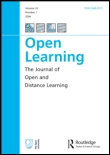
Open Learning
Cultivating Insight in E-Learning ExcellenceOpen Learning, published by Routledge Journals, Taylor & Francis Ltd, is a leading peer-reviewed journal in the field of education and e-learning, showcasing innovative research and practice since its inception in 1970. With a robust impact factor and consistently ranked in the Q1 category for both education and e-learning by Scopus, this esteemed journal positions itself at the forefront of academic dialogue, exploring the evolving landscape of digital and open learning environments. The journal's authoritative content and empirical studies serve as essential resources for researchers, educators, and students striving to enhance pedagogical strategies and educational outcomes in a rapidly changing technological world. Published quarterly, Open Learning remains committed to cultivating scholarly exchange and advancing knowledge within the global education community.

RED-Revista de Educacion a Distancia
Pioneering New Frontiers in Distance LearningRED-Revista de Educacion a Distancia is a premier open-access journal published by UNIV MURCIA in Spain, dedicated to advancing research in the fields of education and computer science applications. Since its inception in 2001, the journal has served as an essential platform for disseminating innovative research and practical applications of distance education methodologies. With an impressive impact factor and ranked in Q2 across both Computer Science Applications and Education categories as of 2023, RED is recognized for its significant contribution to the scholarly community, particularly within the Social Sciences and Engineering domains. Researchers and professionals are invited to explore cutting-edge studies that underpin pedagogical effectiveness and technological integration in educational settings. Based at the Edificio Pleiades Campus de Espinardo in Murcia, RED continues to foster an engaging dialogue among academics, providing insights that propel the field forward.
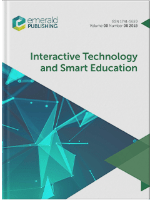
Interactive Technology and Smart Education
Transforming education through interactive innovation.Interactive Technology and Smart Education is a leading academic journal published by EMERALD GROUP PUBLISHING LTD, dedicated to exploring the dynamic intersection of technology and education. With a robust impact factor signifying its significant contributions to the field, this journal consistently ranks in the Q1 quartile in categories such as Computer Science (Miscellaneous), Education, and E-learning, reflecting its prestige and wide-ranging influence. A staple for researchers, educators, and industry professionals, the journal addresses innovative practices and developments in interactive technologies that enhance teaching and learning experiences. Operating from its base in the United Kingdom, the journal spans nearly two decades of impactful publishing, featuring high-quality research that plays a crucial role in shaping the future of education through technology. Scholars seeking to stay at the forefront of this evolving field are encouraged to contribute and engage with the journal's pioneering work.
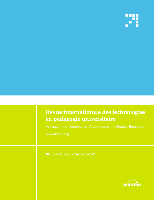
International Journal of Technologies in Higher Education
Exploring the Future of Learning in a Digital WorldInternational Journal of Technologies in Higher Education, with ISSN 1708-7570 and E-ISSN 1708-7570, is a distinguished academic platform dedicated to advancing the intersection of technology and pedagogy in higher education. Published by INT JOURNAL TECHNOLOGIES HIGHER EDUCATION, this open-access journal has been at the forefront of educational innovation since 2004, providing researchers, practitioners, and students access to high-quality research without financial barriers. The journal aims to disseminate cutting-edge studies, best practices, and theoretical insights that explore the transformative impact of emerging technologies in the field of education. Situated in Montreal, Canada, the journal serves as a pivotal resource for those committed to enhancing learning environments through technological advancements. By fostering scholarly discussion and collaboration, the International Journal of Technologies in Higher Education plays an essential role in shaping the future of educational practices globally.
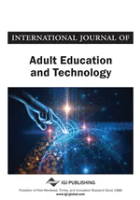
International Journal of Adult Education and Technology-IJAET
Fostering Collaborative Learning in a Digital World.The International Journal of Adult Education and Technology (IJAET) is a premier publication dedicated to advancing the field of adult education through innovative technological approaches. Published by IGI Global, this journal serves as a comprehensive platform for researchers, practitioners, and educators interested in exploring the intersection of adult learning and modern technology. With its ISSN 2643-7996 and E-ISSN 2643-8003, IJAET aims to disseminate high-quality, peer-reviewed research that promotes best practices and fosters collaborative learning environments for adult learners. The journal contributes significantly to discussions around lifelong learning, e-learning strategies, and the role of technology in educational settings, ensuring that it remains relevant in a rapidly evolving digital landscape. With Open Access options available, IJAET is set to reach a wider audience, making significant contributions to the development of adult education practices worldwide.
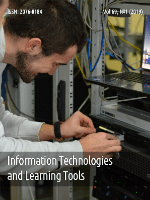
Information Technologies and Learning Tools
Unlocking Potential: Where Technology Meets Learning.Information Technologies and Learning Tools is a pioneering scholarly journal dedicated to the exploration and dissemination of knowledge within the rapidly evolving field of educational technology. Published by the NATIONAL ACADEMY OF EDUCATIONAL SCIENCES OF UKRAINE, INSTITUTE OF DIGITALIZATION EDUCATION, this journal has maintained its Open Access policy since 2006, ensuring that groundbreaking research is readily available to educators, researchers, and practitioners worldwide. With the ISSN 2076-8184, the journal serves as a critical platform for innovative studies focusing on the integration of information technologies into educational practices, seeking to bridge gaps between digital tools and effective learning methodologies. Despite the absence of specific rankings, its commitment to advancing educational theories and applications positions it as an essential resource for professionals and students striving to enhance learning experiences through technology. As the educational landscape continues to transform, Information Technologies and Learning Tools stands at the forefront, fostering collaboration and knowledge sharing across diverse academic communities.

Open Praxis
Connecting educators with cutting-edge educational methodologies.Open Praxis, published by the International Council for Open and Distance Education, is a premier open-access journal dedicated to advancing the field of open and distance education. With its ISSN 2304-070X and E-ISSN 2304-070X, Open Praxis has been providing a platform for rigorous research and innovative practice since 2013, catering to an expanding audience of researchers, educators, and policy-makers interested in the latest advancements in educational methodologies and technologies. The journal is indexed in Scopus, achieving impressive rankings within both the Library and Information Sciences (Rank #72/280, Percentile 74th) and Education (Rank #453/1543, Percentile 70th) categories, highlighting its significant impact in the academic community. Operating under a commitment to open access principles, Open Praxis facilitates knowledge dissemination and collaboration, making vital research accessible to a global audience. Scholars aiming to stay at the forefront of open and distance learning are invited to engage with this journal, which serves as a critical resource for emerging trends, challenges, and solutions in education.

Pegem Egitim ve Ogretim Dergisi
Illuminating Contemporary Practices in EducationPegem Egitim ve Ogretim Dergisi is a prominent academic journal published by PEGEM AKAD YAYINCILIK EGITIM DANISMANLIK HIZMETLERI TIC LTD STI, specializing in the field of education. Based in Turkey, this journal offers a platform for scholarly discourse, catering to both emerging and established researchers in the educational domain. With its ISSN 2148-239X, the journal aims to provide insights into contemporary educational practices, pedagogical innovations, and research findings that influence teaching and learning. Although classified in the Q4 quartile of the education category as of 2022 and achieving a Scopus rank of 1178 out of 1469, it remains a valuable resource for practitioners and academics alike. The journal ceased Scopus coverage in 2023, yet it continues to be a relevant outlet for educational research in Turkey and beyond. While it operates under traditional access models, the potential for collaborative research and knowledge sharing makes it a noteworthy choice for those engaged in the evolving landscape of education.

Journal of Information Technology Education-Research
Connecting Scholars to Shape the Future of IT EducationThe Journal of Information Technology Education-Research, published by the Informing Science Institute, stands as a pivotal resource in the field of educational technology and computer science. With an ISSN of 1547-9714 and an impressive E-ISSN of 1539-3585, this journal aims to disseminate high-quality research and innovative practices that enhance the integration of information technology in educational contexts. It has achieved commendable rankings, notably Q2 in Computer Science (miscellaneous), Q1 in Education, and Q2 in E-learning for the year 2023, reflecting its significance and impact in these domains. Within the Scopus metrics, it ranks #178 out of 1543 in Social Sciences Education and #50 out of 232 in General Computer Science, positioning it in the top percentiles of its fields. This journal is dedicated to fostering scholarly discourse and providing a platform for educators, researchers, and professionals to share their findings and insights, contributing to the advancement of knowledge and practices in information technology education. The journal covers research from 2011 to 2024, ensuring a comprehensive collection of contemporary studies that engage with current trends and challenges in IT education. For scholars seeking an open-access platform to disseminate their work, this journal presents an invaluable option to engage with a broad academic audience.

Smart Learning Environments
Exploring the future of educational innovation.Smart Learning Environments, published by Springer Heidelberg, is a leading open-access journal dedicated to advancing the field of educational technology and intelligent learning systems. Since its inception in 2014, this journal has established itself as a vital resource for researchers and practitioners, showcasing innovative interdisciplinary approaches that enhance learning experiences using smart technologies. With a notable impact factor and recognition in the top quartiles (Q1) of both Computer Science Applications and Education, it ranks within the top 2% of journals in the Social Sciences – Education category and the top 7% in Computer Science, according to Scopus. The journal's scope encompasses empirical studies, theoretical papers, and reviews, making it an essential platform for disseminating cutting-edge research. Researchers, educators, and technology professionals are encouraged to engage with this premier outlet, which not only facilitates access to high-quality research but also promotes collaboration across academic and professional spheres.